Willsmere is great for bird lovers. Many native birds are commonly seen around the property, from the daily magpies, currawongs and cockatoos to less frequent kookaburras, yellow-tailed black cockatoos, galahs, corellas, southern boobooks, and tawny frogmouths. Many of the ones listed below have been spotted in or near Willsmere, notably Yarra Bend Park. Please let us know if you've spotted any other native birds!
Please remember not to feed birds as this promotes dependence and disturbs their natural diet. For further information, please visit the BirdLife Melbourne website.
 Australasian Grebe
Australasian Grebe
Australasian Grebe
Australasian Grebe
 Australasian Darter
Australasian Darter
Australasian Darter
Australasian Darter
 Australian Hobby
Australian Hobby
Australian Hobby
Australian Hobby
 Australian King Parrot
Australian King Parrot
Australian King Parrot
Australian King Parrot
 Australian Magpie
Australian Magpie
Australian Magpie
Australian Magpie
 Australian Raven
Australian Raven
Australian Raven
Australian Raven
 Australian White Ibis
Australian White Ibis
Australian White Ibis
Australian White Ibis
 Australian Wood Duck
Australian Wood Duck
Australian Wood Duck
Australian Wood Duck
 Bell Miner
Bell Miner
Bell Miner
Bell Miner
 Black-faced Cuckoo-shrike
Black-faced Cuckoo-shrike
Black-faced Cuckoo-shrike
Black-faced Cuckoo-shrike
 Black-tailed Native Hen
Black-tailed Native Hen
Black-tailed Native Hen
Black-tailed Native Hen
 Brown Goshawk
Brown Goshawk
Brown Goshawk
Brown Goshawk
 Brown Thornbill
Brown Thornbill
Brown Thornbill
Brown Thornbill
 Chestnut Teal
Chestnut Teal
Chestnut Teal
Chestnut Teal
 Common Bronzewing
Common Bronzewing
Common Bronzewing
Common Bronzewing
 Crested Tern
Crested Tern
Crested Tern
Crested Tern
 Crested Pigeon
Crested Pigeon
Crested Pigeon
Crested Pigeon
 Dusky Moorhen
Dusky Moorhen
Dusky Moorhen
Dusky Moorhen
 Eastern Rosella
Eastern Rosella
Eastern Rosella
Eastern Rosella
 Eastern Yellow Robin
Eastern Yellow Robin
Eastern Yellow Robin
Eastern Yellow Robin
 Eastern Spinebill
Eastern Spinebill
Eastern Spinebill
Eastern Spinebill
 Eurasian Coot
Eurasian Coot
Eurasian Coot
Eurasian Coot
 Galah
Galah
Galah
Galah
 Golden Whistler
Golden Whistler
Golden Whistler
Golden Whistler
 Golden Whistler
Golden Whistler
Golden Whistler
Golden Whistler
 Great Cormorant
Great Cormorant
Great Cormorant
Great Cormorant
 Grey Fantail
Grey Fantail
Grey Fantail
Grey Fantail
 Grey Shrikethrush
Grey Shrikethrush
Grey Shrikethrush
Grey Shrikethrush
 Grey Butcherbird
Grey Butcherbird
Grey Butcherbird
Grey Butcherbird
 Grey Currawong
Grey Currawong
Grey Currawong
Grey Currawong
 Laughing Kookaburra
Laughing Kookaburra
Laughing Kookaburra
Laughing Kookaburra
 Little Black Cormorant
Little Black Cormorant
Little Black Cormorant
Little Black Cormorant
 Little Corella
Little Corella
Little Corella
Little Corella
 Little Pied Cormorant
Little Pied Cormorant
Little Pied Cormorant
Little Pied Cormorant
 Little Raven
Little Raven
Little Raven
Little Raven
 Little Wattlebird
Little Wattlebird
Little Wattlebird
Little Wattlebird
 Magpie-lark
Magpie-lark
Magpie-lark
Magpie-lark
 Masked Lapwing
Masked Lapwing
Masked Lapwing
Masked Lapwing
 Musk Lorikeet
Musk Lorikeet
Musk Lorikeet
Musk Lorikeet
 New Holland Honeyeater
New Holland Honeyeater
New Holland Honeyeater
New Holland Honeyeater
 Noisy Miner
Noisy Miner
Noisy Miner
Noisy Miner
 Pacific Black Duck
Pacific Black Duck
Pacific Black Duck
Pacific Black Duck
 Pied Currawong
Pied Currawong
Pied Currawong
Pied Currawong
 Purple Swamphen
Purple Swamphen
Purple Swamphen
Purple Swamphen
 Rainbow Lorikeet
Rainbow Lorikeet
Rainbow Lorikeet
Rainbow Lorikeet
 Red Browed Finch
Red Browed Finch
Red Browed Finch
Red Browed Finch
 Red Wattlebird
Red Wattlebird
Red Wattlebird
Red Wattlebird
 Red-rumped Parrot
Red-rumped Parrot
Red-rumped Parrot
Red-rumped Parrot
 Silver Gull
Silver Gull
Silver Gull
Silver Gull
 Southern Boobook
Southern Boobook
Southern Boobook
Southern Boobook
 Spotted Pardalote
Spotted Pardalote
Spotted Pardalote
Spotted Pardalote
 Straw-necked Ibis
Straw-necked Ibis
Straw-necked Ibis
Straw-necked Ibis
 Sulphur-crested Cockatoo
Sulphur-crested Cockatoo
Sulphur-crested Cockatoo
Sulphur-crested Cockatoo
 Superb Fairy-wren
Superb Fairy-wren
Superb Fairy-wren
Superb Fairy-wren
 Tawny Frogmouth
Tawny Frogmouth
Tawny Frogmouth
Tawny Frogmouth
 Weebill
Weebill
Weebill
Weebill
 Welcome Swallow
Welcome Swallow
Welcome Swallow
Welcome Swallow
 Whistling Kite
Whistling Kite
Whistling Kite
Whistling Kite
 White-browed Scrubwren
White-browed Scrubwren
White-browed Scrubwren
White-browed Scrubwren
 White-faced Heron
White-faced Heron
White-faced Heron
White-faced Heron
 White Plumed Honeyeater
White Plumed Honeyeater
White Plumed Honeyeater
White Plumed Honeyeater
 Willie Wagtail
Willie Wagtail
Willie Wagtail
Willie Wagtail
 Yellow Thornbill
Yellow Thornbill
Yellow Thornbill
Yellow Thornbill
 Yellow-tailed Black-Cockatoo
Yellow-tailed Black-Cockatoo
Yellow-tailed Black-Cockatoo
Yellow-tailed Black-Cockatoo
Did you know that Willsmere has around 500 metres of direct frontage to Yarra Bend Park? Beyond the 25 acres of private land, there is over 600 acres of public open space and much more again when we consider all the parkland adjacent to this.
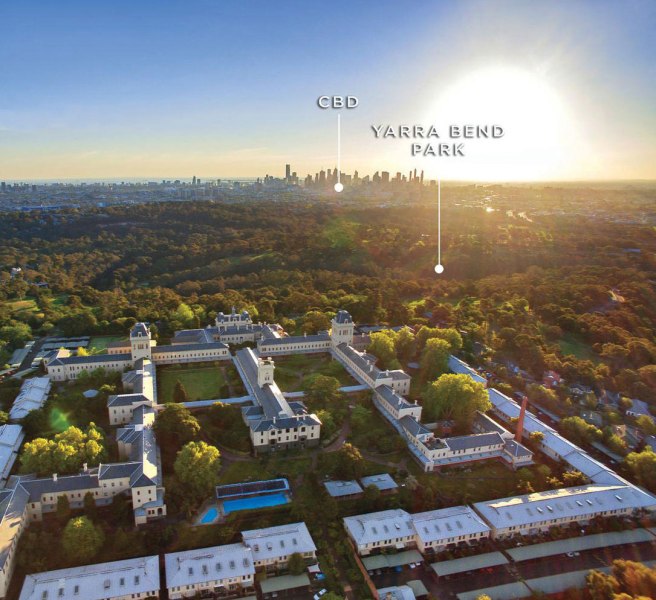
The city view is particularly incredible – it appears a bit like an island inside a forest – as there is almost no trace of suburbia nearby – only trees.
As a result, many people feel that Willsmere exhibits many of the best aspects of rural living all the while being really close to the city. At Yarra Bend Park we find…
VEGETATION:
ANIMALS:
Birds commonly seen in Yarra Bend Park are pictured on our Bird Life page, include:
The Australian Wood Duck; Pacific Black Duck; Rock Dove; Spotted Dove; Dusky Moorhen; Silver Gull; Rainbow Lorikeet; Eastern Rosella; Red-rumped Parrot; Laughing Kookaburra; Superb Fairy-wren; White-browed Scrubwren; Spotted Pardalote; White-plumed Honeyeater; Bell Miner; Noisy Miner; Red Wattlebird; Grey Butcherbird; Australian Magpie; Willie Wagtail; Little Raven; Magpie-lark; Welcome Swallow; Common Blackbird; Common Starling and Common Myna.
Other Possible Birds include:
Chestnut Teal; Northern Mallard; Australasian Grebe; Hoary-headed Grebe; Tawny Frogmouth; Australasian Darter; Little Pied Cormorant; Great Cormorant; Little Black Cormorant; Eastern Great Egret; White-faced Heron; Nankeen Night-Heron; Australian White Ibis; Brown Goshawk; Purple Swamphen; Eurasian Coot; Yellow-tailed Black-Cockatoo; Galah; Sulphur-crested Cockatoo; Azure Kingfisher; Brown Thornbill; Eastern Spinebill; Little Wattlebird; New Holland Honeyeater; Black-faced Cuckoo-shrike; Crested Shrike-tit; Golden Whistler; Grey Shrike-thrush; Grey Fantail; Pied Currawong; Grey Currawong; Silvereye; Mistletoebird; House Sparrow and the Red-browed Finch.
This walk gives you a 30 minute nature fix! Leave behind the inner city suburbs and step into Melbourne's largest area of natural vegetation. Dogs on lead allowed.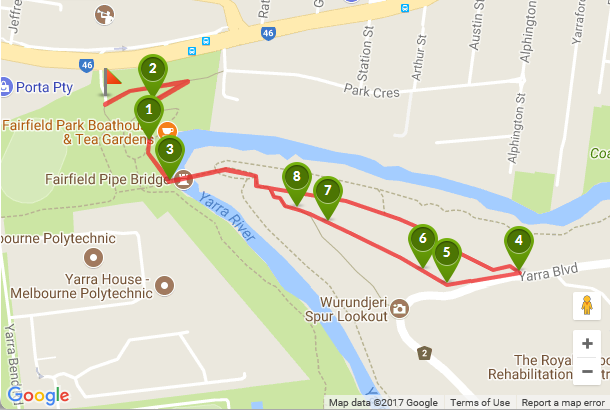
This 9.5 km walk takes in the bats, Kane's Bridge, Dight's Falls, and much more!
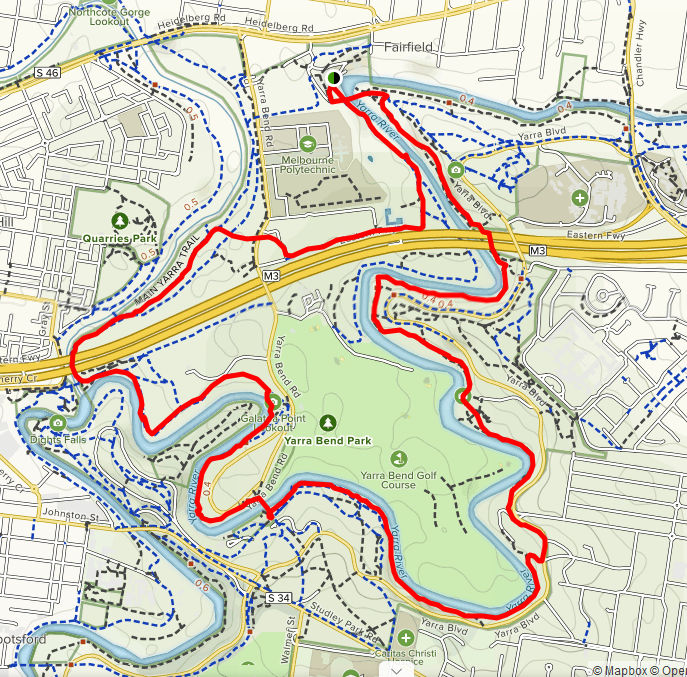
Full details of these walks and many other great walks in the area can be found here:
Parks Victoria acknowledges the Aboriginal Traditional Owners of Victoria, including its parks and reserves, the Wurundjeri people of the Kulin Nation. Through their cultural traditions, Aboriginal people maintain their connection to their ancestral lands and waters. Further information is available from Aboriginal Affairs Victoria AAV, Native Title Services Victoria, and The Aboriginal History of Yarra.
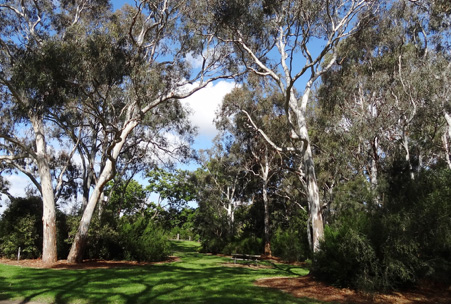
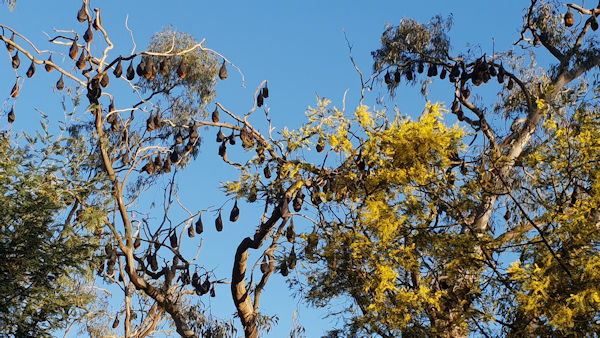
Willsmere is a beautiful location and we are all thankful to be able to live here. We also have some talented residents who enjoy documenting just how beautiful our home is. This page is dedicated to highlighting photographs submitted by our talented residents.
Kew Lunatic Asylum is a decommissioned psychiatric hospital located between Princess Street and Yarra Boulevard in Kew, a suburb of Melbourne, Australia. Operational from 1871 to 1988, Kew was one of the largest asylums ever built in Australia. Later known as Willsmere, the complex of buildings were constructed between 1856 and 1872 to the design of architects G.W. Vivian and Frederick Kawerau of the Victorian Public Works Office to house the growing number of "lunatics", "inebriates", and "idiots" in the Colony of Victoria.
The first purpose built asylum in the Colony of Victoria, Kew Asylum was also larger and more expensive than its sister asylums at Ararat (Aradale) and Beechworth (Mayday Hills). The buildings are typical examples of French Second Empire and Italianate styles which were popular in Victorian Melbourne. Its design was based on contemporary English barracks-style models of asylum planning, such as Colney Hatch. The E-shaped complex of buildings was designed to be elegant, beautiful, yet substantial, and to be viewed as "a magnificent asylum for the insane" with the aim of portraying Melbourne as a civilised and benevolent city whilst avoiding the jail-like appearance of other asylums. These aims were furthered by the use of low Ha-Ha walls and extensively landscaped grounds. Long considered of cultural and historic significance to Melbourne, Kew Asylum and its complex of buildings were registered on the Register of the National Estate in March 1978.
Despite initial grand plans and ideals, Kew Asylum had a difficult and chequered history contributing to several inquiries throughout its 117 years of operation, including a Royal Commission. Overcrowding, mismanagement, lack of resources, poor sanitation and disease were common criticisms during the asylum's first five decades. Out-dated facilities and institutionalisation were criticisms of Kew's later period.
Kew continued to operate throughout the 20th century as a "Hospital for the Insane", "Mental Hospital", or "Psychiatric Hospital", treating acute, long-term and geriatric patients until it closed in December 1988. The main building and surrounding grounds were sold by the State Government in the 1980s and were redeveloped as residential properties while retaining heritage listing.
One of Melbourne's most recognised landmarks, Willsmere was originally the Kew Asylum and Willsmere Hospital before being decommissioned in 1988. Placed on the historic buildings register in 1991, the property was redeveloped into 155 residential apartments with a further 101 townhouses added, and officially opened in 1993.
Significant care was undertaken to ensure that the new development preserved the original buildings and that the new townhouses were complementary in style. The fever tents were retained and converted into a gymnasium and function room. Two gazebos were retained, as were the privy buildings, two of which are now used as bicycle sheds, one as a modern bathroom, and one retained in its 1950s state for historic purposes. The perimeter walls have mostly been retained and the ha-ha ditches re-excavated in some places. In addition to some 25 acres of landscaped gardens, Willsmere now also contains two tennis courts, three BBQ facilities, a 25 m solar heated swimming pool, a toddler’s pool, a bowling green, and a half-sized basketball court.
For further information, you can download this brochure, which includes historical notes as well as a map of a self guided walking tour.
Update 25-Nov-2025: Gardens Master Plans
The 1994 master plans designed by Holly Mitchell have now been digitised. The whole site is divided into 27 areas which correspond to very detailed maps showing exactly which species of plants are to be planted, reference by 6-letter codes to adjacent tables.
This is an invaluable guide and should be used as the first point of reference when considering maintenance and repair, with few exceptions such as plants that have proven unsuitable, or may eventually have unacceptable impacts on safety or services (e.g. plumbing, paths, etc.) To keep a consitent theme across the estate, and to make the job of managing the gardens efficient, please note that modification of common gardens is not allowed without written permission. This includes the beds in front of the townhouses.
| Index | PS01 | PS02 | PS03 | PS04 | PS05 | PS06 | PS07 |
| PS08 | PS09 | PS10 | PS11 | PS12 | PS13 | PS14 | PS15 |
| PS16 | PS17 | PS17a | PS18 | PS19 | PS20 | PS21 | PS22 |
| PS23 | PS24 | PS25 | PS26 | PS27 |
To complement this master plan is the 1993/4 Landscape Report by Holly Mitchell that outlines the design philosophy of the site.
Willsmere has a very large and beautiful system of gardens surrounding the heritage buildings. Some of the trees have as much historical significance as the building itself, including listing on the National Trust register: http://vhd.heritagecouncil.vic.gov.au/places/71255 (Himalayan deodar cedar), http://vhd.heritagecouncil.vic.gov.au/places/71253 (peppercorn).
A comprehensive survey of all trees over 5 metres (about 350!) was conducted and reported in September 2019 to ensure appropriate management and replacement planning. These reports are separated as "internal" or "external" depending on location relative to the perimter walls. Tree identities are indexed by location meaning you can look up the botanical and common names. The reports can be downloaded here: Internal Trees; External Trees.
The Willsmere Kitchen Garden (WKG) is a community garden located in Yarra Bend Park, adjacent to Willsmere. The WKG was established in 2017 as a collaboration between a group of residents from Willsmere and Parks Victoria. It provides a cherished place to share a vision of growing our own food, strengthening community bonds and sharing gardening knowledge. We take pride in its openness and welcome everyone in the community to enjoy our beautiful gardens, but ask that you respect the produce of individuals.
The first stage of the gardens is designed to pay homage to the formal gardens of the neighbouring asylum and the site’s history as a kitchen garden that supplied food for the patients and staff of the asylum. It features a central talking circle surrounded by seats that are designed to encourage conversations and community. Above-ground beds were donated by Bunnings Hawthorn in November 2018 and smaller community herb beds around the inner circle were created with recycled local materials. In 2019 a variety of herbs were planted for all to enjoy.
The inaugural committee have a vision and a grand plan for the future that involves a second set of above-ground beds mirroring the first, a heritage fruit orchard, a garlic farm, many more in-ground beds, grape vines, communal spaces with paving and chairs and tables as well as a series of workshops and community days designed to celebrate the space and share knowledge.
Willsmere is located at 1 Wiltshire Drive Kew VIC 3101. Visitor access is via Yarra Boulevard.